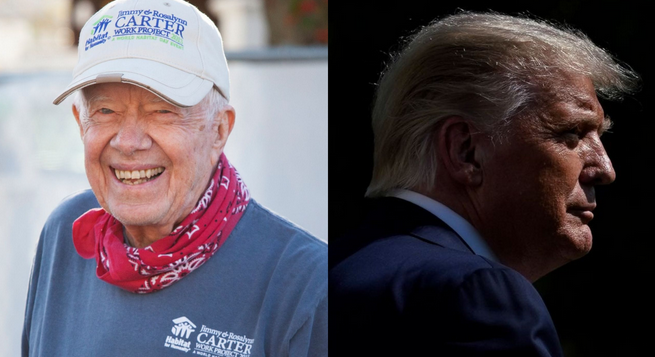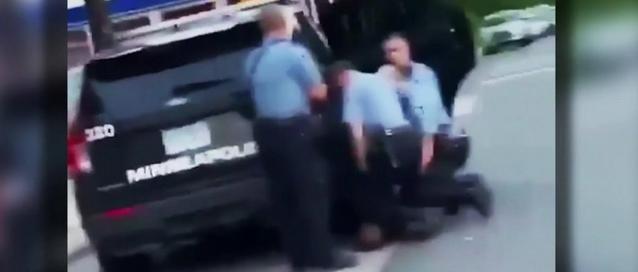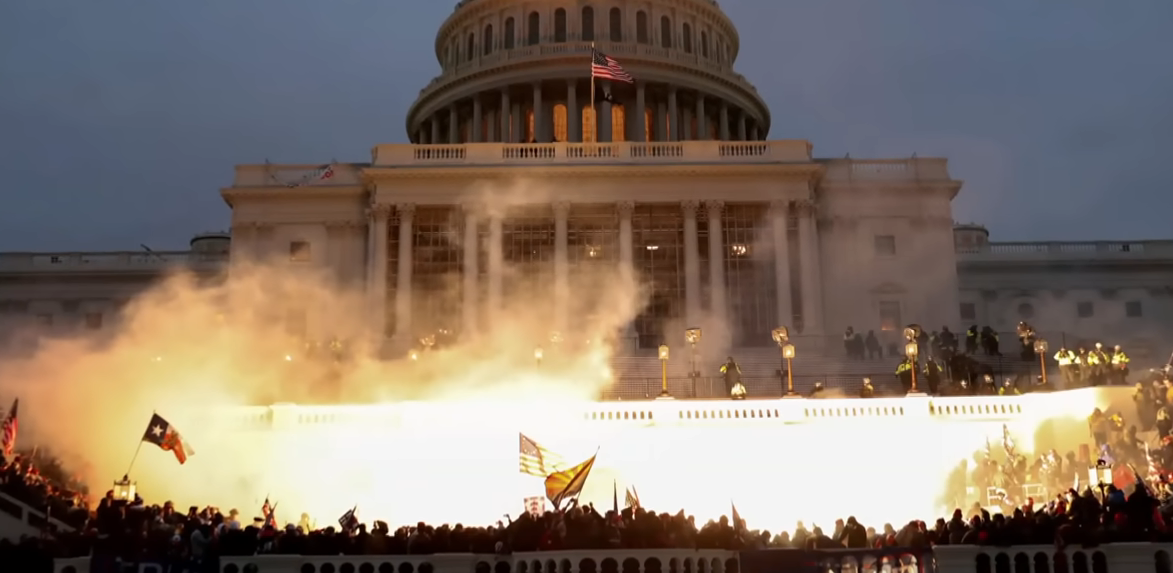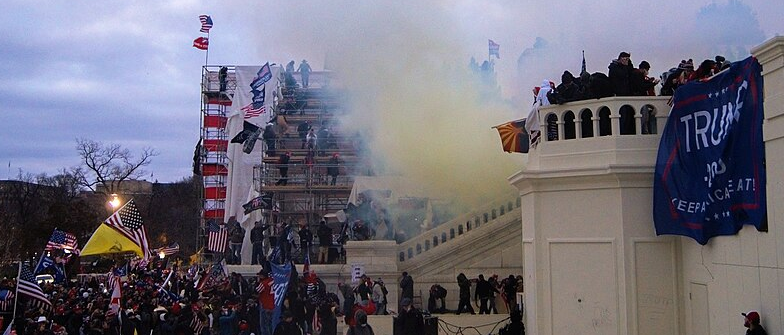Photo: YouTube
The New York Times handed over its popular The Morning daily newsletter on January 18 to new hire German Lopez, formerly of Vox. His debut edition of the data-driven newsletter (usually helmed by David Leonhardt) was headlined “Examining the Spike in Murders.”
As criminal justice activist and expert Alec Karakatsanis (Twitter,1/ 18/22) pointed out, the analysis presented as indisputable the notion that a rise in homicides demands a police-based solution—a position that is, in fact, highly disputed, and worth debunking in detail, since it’s a popular one these days, both in the Times and in other prominent outlets (FAIR.org, 6/24/21, 7/20/21).
More police as racial justice?
German Lopez (New York Times, 1/18/22) argues that the “short-term fixes” for a rise in murder involve “more focused policing, targeting the people and places most likely to be violent.”
Lopez describes an increase in the murder rate over 2020 and 2021 (which, it’s worth pointing out, is still lower than it was from 1970 through 1996) and explains that victims are disproportionately Black, framing his analysis in terms of racial justice:
The violence remains a grave example of racial inequality in the US. We have real solutions, with strong evidence, to deal with the problem, experts said. But those solutions need support from the public and lawmakers to go anywhere.
Lopez appears to see himself as working to right a wrong here, helping to inform the public about concrete solutions that will address racial inequality. And yet one of his central theories—that a policing “pullback” helped drive rising homicides, so police are a necessary part of the solution—not only rests on very shaky ground, its prescription entails heavy costs in terms of racial justice that Lopez refuses to consider.
Lopez cites zero Black sources about the causes or the solutions. Aside from a woman from Chicago who simply describes her experience of hearing gunshots in her neighborhood, his other three named sources are white professors of criminology and public safety.
Lopez says “experts” point to “three broad explanations” for the increased murder rate: “the pandemic,” “changes in policing” and “more guns.” Two of these are fairly straightforward: Gun sales and carrying greatly increased, which one would expect to increase the number of murders, since numbers of guns correlate with numbers of homicides. And the pandemic disrupted social services and safety nets that help prevent violence.
As for “changes in policing,” Lopez explains:
The fallout from the 2020 racial justice protests and riots could have contributed to the murder spike. Police officers, scared of being caught in the next viral video, may have pulled back on proactive anti-violence practices. More of the public lost confidence in the police, possibly reducing the kind of cooperation needed to prevent murders. In extreme circumstances, the lack of confidence in the police could have led some people to take the law into their own hands—in acts of street or vigilante violence.
It’s a theory (sometimes called “the Ferguson Effect”) that hinges on an awful lot of “could have”s, “may have”s and “possibly”s. It’s extremely popular among police chiefs and their boosters who, seeking to defend against movements challenging police violence, deflect blame back onto protesters.
Questioning the timing
After introducing the possibilities, Lopez turns to sorting out the likelihood of each. He argues that “timing” undermines the pandemic hypothesis, since “the murder spike took off in May and June 2020, months after Covid began to spread in the US,” and “other countries didn’t experience similar spikes during the pandemic.” Meanwhile, the same timing “supports” the policing explanation, because, he says, the murder rate rose “unusually quickly shortly after George Floyd’s murder and the ensuing protests,” and killings increased in 2015 and 2016 “after protests over policing during those years.”
The comparison to other countries is not terribly useful without much more fine-grained analysis, as it ignores their wide range of differences in terms of their governmental response to the pandemic and other factors that impact violent crime: inequality, lack of social safety nets and availability of guns.
As for timing, as Karakatsanis (Twitter, 1/20/22) points out, experts are very hesitant to speculate about short-term effects on crime because of the complex interacting factors. In fact, there’s even a great deal of uncertainty about the factors impacting historical, long-term crime rates. But there’s plenty to cast doubt on the protest/policing explanation. Murder rates are seasonal, lower when it’s cold (as when lockdowns started) and peaking every summer—the same time police protests have historically happened. Previous research hasn’t found an impact of “de-policing” on homicide. And there’s a great deal of diversity across cities when you take apart the data: NYC and LA, for instance, which both had major BLM protests, didn’t experience unusual homicide surges immediately afterwards.
Lopez inserts one of his experts, criminologist Richard Rosenfeld, to close out the brief discussion of the possible causes: “All three played a role. What’s difficult is to assign priority to one compared to the others.”
In other words, readers are to understand that it’s anyone’s guess whether “fallout” from racial justice protests was a bigger factor in the rising murder rate than the pandemic or a flood of new guns—and Lopez pretty clearly nudges readers toward guessing the answer is that it was.
‘No getting around’ more punishment
Correctly identifying causes is crucial, since the causes point to different solutions. “In the short term,” Lopez writes,
there’s solid evidence for policing—specifically, more focused policing, targeting the people and places most likely to be violent. With some of these strategies, the police work with other social services to lift violent perpetrators out of that life.
He then quotes another of his experts to leave no room for argument: “I’m as much a reformer as anybody, but the short-term solutions around high violence are mainly punitive. There’s no getting around that.” (In case you were wondering whether “proactive anti-violence practices” really meant anything but more punishment.)
The link Lopez uses to back up his claims of “solid evidence” behind policing directs readers to a piece he wrote for Vox in September (9/27/21) with a headline that made clear his position on this issue before the Times hired him: “Murders Are Spiking. Police Should Be Part of the Solution.”
One problem with Lopez’s argument in the piece—which is much longer and includes more nuance and caveats than his Times version—is that he used evidence about overall reductions in crime to make arguments about homicide, when in fact the two don’t move in tandem. (Indeed, overall crime rates have gone down during the pandemic, as Lopez has elsewhere acknowledged—Vox, 7/21/21.)
Two key studies he relied on, for instance, noted that they found no or minimal reductions in violent crime with increased policing. A third (NEBR, 12/20) emphasized that while it did find a small reduction in homicides,
reducing funding for police could allow increased funding for other alternatives. Indeed an array of high-quality research suggests that crime can, in certain contexts, be reduced through methods other than policing or its by-product, incarceration.
That’s particularly noteworthy, given that the study found that increased policing also resulted in more arrests for low-level crimes like loitering and drug possession, which in turn places more burdens on the most affected communities: crippling court fees and fines, plus the effects of even brief incarceration like loss of income, jobs or housing, breaking up of families and disruption of mental health and health services. And for all that, increased incarceration doesn’t even increase public safety or reduce recidivism.
In other words, if policing in some form can modestly bring down murder rates, it also incurs very real costs, above and beyond budgetary ones—which are rarely if ever measured in these studies.
In the Vox piece, Lopez did acknowledge many caveats to the bold argument made in the headline. He noted that the research suggests that not just any policing works, for instance. This is where the “proactive policing” idea comes in, a favorite of policing proponents, and a big part of the argument that a police “pullback” causes the rise in crime. It’s true that many studies have found that specific, focused policing practices have produced some (mostly small, short-term) decreases in crime. But a) that’s not what most police departments do, except in a few ad hoc short-term programs (Police Quarterly, 1/20), so it could be expected to have had next to no impact on the nationwide homicide rate, and b) the studies once again don’t take into account the costs of these programs, including the negative impacts on heavily policed communities, mentioned above.
Lopez admitted the latter issue in his Vox piece. And he raised the possibility of alternatives to policing, though he gave them less credence than the authors of the NEBR study, because they fail to clear an impossibly high bar: “These other approaches were all evaluated in a world where police exist, so even the positive research can’t demonstrate that these are necessarily true alternatives to police.” So even if it won’t hurt to try these other approaches, Lopez concluded, the data say we’ve got to push forward with increased policing.
This is the same conclusion he brings to his Times debut. Lopez wrote that long-term solutions include those that “enrich both individuals’ and communities’ socioeconomic standing over time,” as well as “gun control and higher alcohol taxes.” Both these and policing solutions are “likely necessary to reverse the murder spike and prevent future increases.” That’s just the expert consensus, Lopez suggests.
Alternatives to more police
In fact, many experts disagree.
As one should always remember, the New York Times is not a monolith. Another reporter at the outlet, Shaila Dewan (11/8/21), looking specifically at the impact on crime of increasing funding for police departments, drew very different conclusions based on her sources—four academics and two community activists. All but one offered some pushback or alternative to the “more policing = less crime” mantra, demonstrating that Lopez’s experts do not come close to representing a consensus.
And Dewan’s remarkable piece raised certain critiques that rarely appear in corporate media accounts of crime, such as the fact—pointed out by Tamara Nopper, an abolitionist academic—that crime statistics come from the police and do not include civil rights violations or police violence (nor do they highlight white collar crime, or corporate crimes like wage theft and illegal air pollution). Take, for instance, the fact that while there were some 25,000 homicides in 2020, more than one million people per year in this country are “threatened or subjected to police use of force” during encounters with police (Annual Review of Criminology, 1/22).
Perhaps one of the most striking pieces of evidence against Lopez is one he cited himself in his Vox piece. A “majority” of a panel of over 60 criminal justice experts agreed that increasing police budgets would improve public safety, Lopez told readers. “Most” also say the same of increasing social service budgets, he then noted, but “there’s no reason, if the goal is to fight crime, that communities shouldn’t expand both policing and social services,” he wrote.
Of course, the reasons to not expand policing are myriad, as I’ve already spelled out. And while his portrayal of the survey is technically true, it’s a twisted interpretation of the panel’s results, which strongly tilted toward increasing social service budgets, which 84% agreed with, versus 61% for increasing police budgets. And strong agreement found even greater disparities, at 41% for social service increases versus only 10% for police increases.
Policing also isn’t the only viable short-term solution, as Lopez would have readers believe. There are non-policing short-term approaches with evidence supporting their impact on gun assaults and other index crimes, as Dewan pointed out in her piece, such as increased street lighting and cleaning up vacant lots—which don’t come with the drawbacks of policing.
And given the clear links between violent crime and gun prevalence, surely “gun control” merits more than a name check in any discussion of solutions, however brief.
As Karakatsanis (Twitter, 12/29/21) observes, a central aim of “copaganda” is to distract the public from inequality:
The goal is to extract wealth from [the] working class, make them less safe, and then offer them only those “solutions” that increase the power and control over them by people who own things.
By FAIR.ORG








